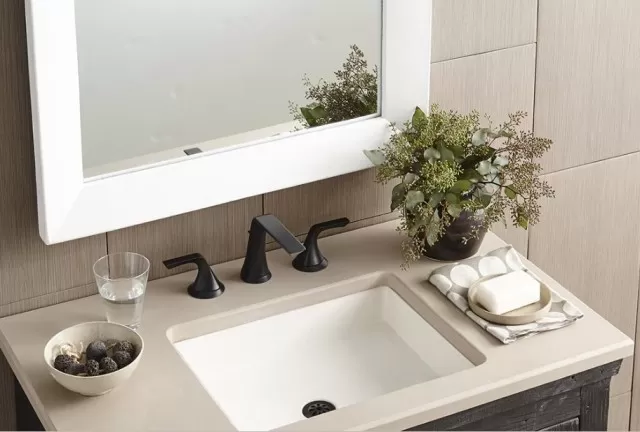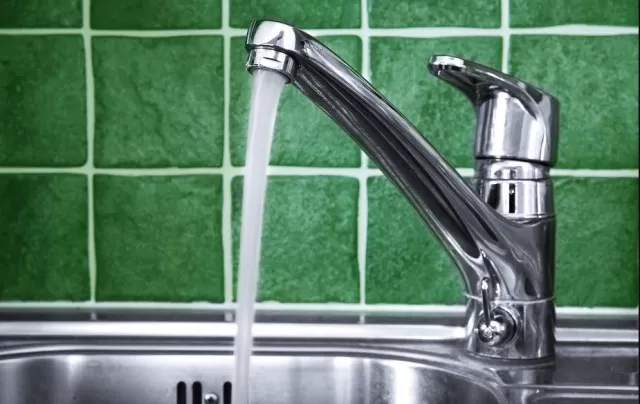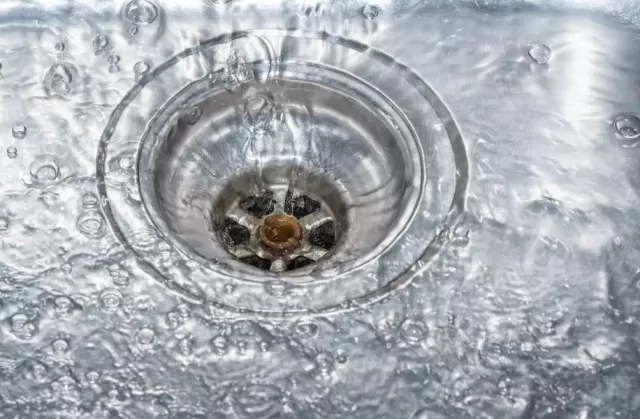Throughout the day, your Bathroom Sink accumulates various unpleasant residues, such as toothpaste, makeup spills, hard water spots, and more.

Simply rinsing your hands won’t remove the stubborn grime that builds up.
While wiping the sink daily with a damp cloth or cleaning wipes can help prevent major buildup, a more thorough cleaning is recommended once a week. To achieve a completely clean and spot-free sink, it’s necessary to address bacteria, stains, and unpleasant odors by using an effective bathroom cleaner and gently scrubbing.
This guide will provide you with instructions on how to clean your bathroom sink, including the drain and faucet. Even in a busy bathroom, following these quick cleaning steps will lead to a pristine sink.
Clean Different Types of Sinks

Clean Different Types of Sinks
The method of cleaning your bathroom sink will vary depending on the material it is made of.
Here are some guidelines for cleaning different types of sinks:.
Ceramic or Porcelain Sinks:
Avoid using abrasive cleaners or tools that can scratch the surface.
Use a mild dish detergent or a non-abrasive bathroom cleaner. Gently scrub the sink using a soft cloth or sponge.
Rinse thoroughly with water and wipe dry. Natural Stone Sinks (e.g., granite, marble, travertine):.
Clean the sink with a mild dish detergent and water or a stone cleaner specifically made for the material.
Avoid using abrasive tools or harsh cleaning products that can damage the stone. Wipe the sink gently using a soft cloth or sponge.
Rinse well with water and dry the surface to prevent water spots or staining. Metal Sinks (e.g., stainless steel, copper, bronze).
Use a mild dish detergent and water or a cleaner specifically formulated for the type of metal.
Gently scrub the sink using a soft cloth or non-abrasive sponge. Rinse thoroughly with water and dry with a clean cloth to prevent water spots.
For stainless steel sinks, you can also restore shine by wiping with a cloth dampened with white vinegar. By following these guidelines, you can effectively clean and maintain the different types of sinks in your bathroom, keeping them in good condition for years to come.
Bathroom Faucet

Clean the Bathroom Faucet
Cleaning the bathroom faucet is essential to maintain its appearance and remove any buildup.
Here’s how you can effectively clean your bathroom faucet:
Wash the Faucet.
Start by mixing Dish Soap and water in a small bowl or bucket.
Wet a cleaning cloth with soapy water and gently wipe down the entire faucet, including the handles and spout. This will help remove any dirt, grime, or surface stains.
Once you’ve thoroughly cleaned the faucet, use a dry cloth to dry it off and prevent water spots.
Remove Any Buildup.
If there is a stubborn buildup or mineral deposits on the faucet, you can use a mixture of equal parts vinegar and water.
Wet a cloth with the vinegar solution and wipe down the affected areas, ensuring you cover all the surfaces. For hard-to-reach spots or tight corners, you can use a soft toothbrush dipped in the vinegar solution to scrub away the buildup.
Afterward, wipe the faucet with a clean, dry cloth to remove any residue and make it shine.
By following these steps, you can keep your bathroom faucet clean and free from unsightly buildup.
Remember to choose cleaning methods suitable for the faucet’s material to avoid causing any damage.
Sink Drain

Clean the Bathroom Sink Drain
Cleaning the bathroom sink drain is an essential step to prevent clogs and maintain a fresh-smelling bathroom.
Here’s how you can clean the drain effectively:
Rinse the Stopper and Drain.
Start by removing the drain stopper and discarding any debris that may have accumulated.
Give the stopper a thorough rinse before placing it back in the drain. This simple step helps prevent the buildup of small debris in the drain, ensuring it stays clear and free-flowing.
Regularly cleaning the drain will also help eliminate any unpleasant odors caused by bacteria growth.
Remove Any Clogs.
If you notice that your drain is slow or partially blocked, remove the stopper and use the end of a wire hanger to gently clear away any visible clogs.
Be careful not to push the clog further into the drain. If the clog persists, try using a biodegradable and noncorrosive pipe cleaner or a household cleaner like hydrogen peroxide.
Follow the instructions on the product and use it to flush out the drain, effectively clearing any remaining debris or buildup.
By following these steps on a weekly basis, you can keep your bathroom sink drain clean and prevent clogs from occurring.
Bathroom Sink

Clean a Bathroom Sink
Cleaning your bathroom sink is a simple task that can be made even easier with a clever technique.
Fill the Sink and Add a Cleaning Solution.
Start by filling your sink with a few inches of hot water.
You can add dish detergent or a cup or two of white vinegar to create a cleaning solution.
Scrub the Sink and Countertop.
Use the cleaning solution to rub around the faucet and wet the entire surface of the sink basin.
Take a cloth, dip it into the water, and use it to wipe down the countertop. You can also place small items like soap trays or toothpaste cups into the water to soak.
Allow everything to sit for at least 10 minutes.
If you choose to use the vinegar-water mixture, you’ll benefit from its non-toxic nature and the vinegar’s ability to effectively remove lime deposits and Soap Scum.
It evaporates quickly, leaving a clean and shiny surface. Alternatively, you can use your preferred bathroom surface cleaner.
Spray the sink basin and let it sit for about 30 seconds to break down the grime before wiping it clean with a cloth.
Drain and Dry.
After soaking, drain the sink and dry the items that were soaked.
Use a dry cloth to wipe off any remaining water from the sink and countertop.
Disinfect the Sink.
For added cleanliness, use a disinfectant spray to thoroughly wet the surface of the sink.
Allow the disinfectant to sit for at least 10 minutes before wiping it away.
*The information is for reference only.